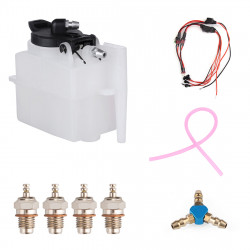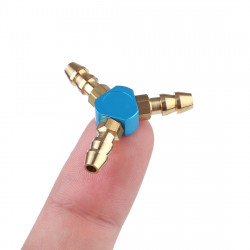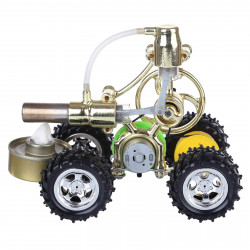
The most over-looked lipo charger spec: Balance Current
If you believe you know everything there is to know about Lipo chargers, I have a problem for you. There is a Lipo charger specification that is frequently disregarded. Still, it's important because it can cause your charge cycle to take much longer, even if you have a large, powerful charger and a robust power supply. In this blog, we'll discuss why you should definitely consider the balance charge current when choosing a charger.
In my opinion, the most important thing you should ask when looking for a charger is how long it will take to charge your batteries. If given enough time, a tiny, weak charger could charge a huge battery, but who wants to sit around for hours on end waiting for packs to charge? You want to take off.
We're looking at the ISDT k2, which has a rating of 200 watts, 20 amps, or 500 watts across two channels. You're probably accustomed to looking at metrics like the watt rating.
If you're unsure how to evaluate those factors and determine how long it will take to charge your battery, is 200 Watts sufficient for you? Is 500 watts sufficient? However, hardly anyone gives much thought to the one we will discuss today—no one. Congratulations if you're among those who are already aware of this! However, many individuals ignore it.
To see why the balance charge rate may constrain your charger's performance, let's quickly review how charging operates and what the balance function performs. Here, we're looking at a battery representation. It's a four-cell battery because I didn't want to add additional images to this blog. It functions similarly if it's a five- or six-cell battery.
We are depicting the battery's state of charge; these batteries are somewhat depleted. The yellow portion shows the battery's charge level; if it is lower than 3 volts, it is at 4.2 or full charge. All cells in a battery should discharge precisely the same amount and reach the same voltage under perfect circumstances. All cells will have the same internal resistance under ideal circumstances, so when we draw current from them, it will do so equally. Let's accept the fact that this isn't always the practice case. If we were to charge those cells, the charger would charge them all at once by forcing current into the battery through the main discharge lead connected to each cell.
Thus, everything is excellent; the cells all charge at the same rate and reach 4.2 volts of full charge at precisely the same moment. In the real world, however, it is not how things operate. Even if you start with a fully charged battery with all of the cells at 4.2 volts, some cells will discharge to a lower voltage than others during regular use because the internal resistance of each cell in the actual world will not be precisely equal. And we can see that this is reflected here, with one cell slightly higher and another somewhat lower, each in a different state of charge.
What will happen if we proceed with charging those batteries via the main discharge lead, which is the standard method? All cells charge simultaneously in proportion to their differences in internal resistance when the lipo charge current enters them through the main discharge lead. Thus, they will start to fill up. This illustrates the issue that arises and that balancing is intended to address. As a result, each cell is charged at roughly the same rate, but the cell with the highest voltage reaches 4.2 volts first. The cell would be dangerous because charging above 4.2 volts is generally considered unsafe. If we continue charging at this point, we will continue pumping current into all the cells because that is how charging works. What can we do because the other cells aren't at 4.2 volts? The charger keeps charging all the batteries via the main line, but as the whole cells start to go above 4.2 volts and overflow, it starts to draw current out of them to prevent them from getting overcharged. This is what's happening with the balance lead if you suck it off like your Coke is about to fizz over and then go ahead and suck it down. As a result, the current flows through the main discharge lead, filling each cell simultaneously. When one cell reaches an excessive level, the charger draws electricity from the entire cell and keeps going.
We can now observe that these last cells are starting to fill up. When they do, the charger will begin to subcurrent them to prevent them from filling up to 4.2 volts. Once the last cell reaches 4.2 volts, the charging process is complete.
Most people believe that the charger pushes current through the balance lead, charging each cell one at a time until it reaches 4.2 volts. However, that is not how to balance charging operations. A few chargers operate that way, but that isn't how most of them operate, so why don't they? Each one is finished when it reaches 4.2 volts. It's easier to design a single large charger than four smaller ones, and then a balancing mechanism prevents overcharging. This is how they do it, though I'm unsure why. The issue is that at least with the charger's design, cell discharge is incredibly inefficient and slow. These chargers pass current over a bank of resistors, turning the charge into heat. For instance, I can't recall the watt rating of the large one and wire wound resistor, but it's probably in the tens or several hundred ranges. This honkin' gadget allows me to release a lot of currents. I can discharge 7810 amps from a 4s lipo battery without overheating or damaging itself if I install a fan and blow air into it. It's enormous; your charger doesn't have one of them. Instead, it has a small bank of resistors, and when those resistors heat up, a tiny fan blows over them. When you set your charger in storage mode, it can charge quickly because your battery can handle a lot of current. This is because the charger can only discharge currents rapidly to prevent it from burning itself out. However, when you discharge down, it can only go as far as roughly two amps, and balancing is the same as discharging.
Therefore, when shopping for a charger, you should not only look at the watt and amp ratings you should but also scroll down and find the balance current somewhere in the specifications. This is because the balance current will limit how quickly you can charge the battery once any cell reaches 4.2 volts. There are chargers with that specification if your pack is large, like a 5,000-milliamp hour 6s pack, and one of those cells hits 4.2 volts and is complete. In that case, your balance current is 500 milliamps, which is not a fantastic specification. Because you can only add current as quickly as the charger can draw it from the top of the cell, the charging process will now slow down to 500 milliamps. For example, if you have a 500-watt 20 amp charger charging a large battery or packing 500 watts into it, the charging process will slow until one of the cells reaches 4.2 volts; at this point, we'll draw 500 milliamps from the battery.
Therefore, this could be one of the causes of your charging appearing to become extremely slow near the conclusion of the charge cycle. We will not discuss the other causes. However, the final percentage of your charging cycle will be extremely slow if your charger has a very low balance current, your battery is out of balance, or if your battery is vast and somewhat out of balance.
Let's examine the Hota D6, another charger. My D6 duo is the D6 Pro. The balance current is 1600 milliamperes, which is quite good. Any balance current beyond 1 to 1.5 amps is also good, but a current below 1 amp is not as good. Of course, more is better, but you'll need to balance everything. You should be very careful because there are some chargers out there—I'm not naming them, but I know they exist—that have impressive specifications regarding how many Watts they can crank, but they have a terrible balance current. They could take forever to charge your packs. Remember that many chargers don't list the balance current on their main product page; you must download the manual or research. For that reason, you might want to avoid them.









